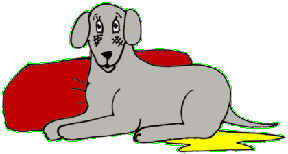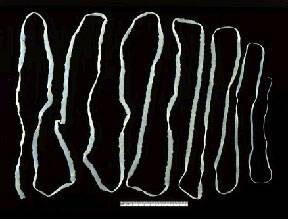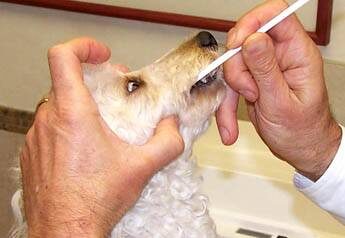Understanding Your Dog’s Body Language
Body language in dogs is all about communication. Since dogs can’t form words, they use body language to “talk” to us. This includes different body postures, facial expressions, movements, and types of barks. These communication behaviors are used to respond to their surroundings, convey messages about ongoing situations, or to respond to someone else’s body language.

A dog’s body language is often instinctive and happens naturally, such as trying to settle down a tense environment through actions or responding to an invitation to play. This form of communication can be used between dogs, during dog and human interactions, or between dogs and other animals. Knowing what your dog is communicating can help you understand his needs better and keep him comfortable in any given situation.
Below are some common types of body language that dogs use. It is important to recognize that many of these types of body language can mean different things in different settings and should be used in context of whatever is happening in the moment. A common example of this is panting, which could mean “I am nervous,” or “Gosh, it’s hot out,” or even “I’m tired.”
Diffusive Behaviors
These are types of body languages that dogs use to avoid conflict, help diffuse a potentially intense or threatening situation, and keep interactions from getting out of hand. Some refer to these behaviors as calming signals because, in a way, they signal to others things like “everything is ok,” “things have gotten a little too tense,” or “I am not a threat.” That being said, these types of behaviors indicate more than just calming; they communicate both how the dog is feeling and her ability to react and interact with others.
Be aware that some of these behaviors can be misinterpreted as signs of guilt, such as the slow, creeping walk towards or away from you when you correct your dog for doing something wrong. This behavior does not mean your dog is acting guilty for getting into the trash. It means she is trying to diffuse the situation and lessen the intensity of your correction. She honestly may have no clue at all why you are upset with her, and she just wants you to stop yelling.
Happy/Relaxed
- Keeping the mouth open, often with the tongue lolling out, is typically a very relaxed posture for a dog.
- Bowing down on the front legs, often known as a play bow, can be an invitation to play or a diffusive tool indicating that the dog is not a threat to someone or something else.
- Tail wagging can often be content, happy, or excited body language. In certain settings, it’s important to know that tail wagging can indicate nervousness, anxiety, or an effort to diffuse a tense situation. Be mindful of what else is happening in the dog’s environment and remember that a wagging tail does not always mean a happy dog.
Anxiety/Fear/Worry
- Cowering or making the body small, and crouching low to the ground can be a sign of fear.
- Yawning frequently, especially when not obviously tired can be a sign of stress, fear, or anxiety. It can be a way to diffuse a tense situation the dog either finds himself in the middle of or in his immediate surroundings (e.g., other dogs fighting, intense talking amongst a dog’s owners, or being spoken to harshly by an owner).
- Licking the lips or nose, even when no food or water is around, can be a sign of anxiety or fear. This is frequently used as a diffusive behavior.
- Panting but not interested in water, or hot, can be a sign of fear, anxiety, or stress.
- Combination of the ears positioned low and out to the side and the pet’s brows down or furrowed can be seen with anxiety or worry. This can often occur with other postures such as lowering the head and neck, and keeping the mouth closed. Be aware that lowering the head, neck, and ears can also be a sign of assertiveness or aggression in really tense situations, so assess what else is happening in the environment.
- Creeping around or moving slowly when walking can be a sign of fear or anxiety. It is frequently a diffusive signal. This type of walking can also be a hunting maneuver, such as if a dog has spotted potential prey. Moving away quickly and darting around is also a sign of anxiety or fear.
- Appearing on alert and trying to look around at everything quickly is a sign of anxiety or fear.
- Unwillingness to eat or take a treat during a potentially stressful situation is a common sign a dog is anxious or afraid.
- Pacing around and unwillingness to settle down in one place can be a sign of anxiety. It can also be a sign of excitement and happiness.
- Averting the eyes, turning the head away or to the side can be a sign of anxiety. This can also be a diffusive tool as well, to avoid conflict or help diffuse a situation.
- Pausing, holding position, or freezing can be a hunting behavior (sometimes called pointing), a sign of anxiety or uncertainty, or a diffusive behavior.
- Tail tucked between the legs is often a sign of fear or anxiety and can occasionally be a diffusive behavior
- Sniffing or snuffling along the ground can mean a great deal; it is often a way for dogs to get a feel for the environment, follow the trail of a recent inhabitant, discover signals left behind by other dogs or animals, or just enjoy the delights of nature. It can also be a sign of anxiety and a diffusive tool, such as when being approached by someone or something that may be a potential threat.
- Raising a front paw can be a diffusive behavior or indicate anxiety/stress.
- Rolling onto the back is often a sign of fear, although the occasional very confident dog may have learned to do so in order to get tummy rubs.
- Barking or whining could be due to fear, anxiety, or excited/worked up. Growling could be assertiveness and/or aggression, or fear. High-pitched barking often means the dog is too excited and vocalizing to try to calm themselves down. Barking can also serve as a warning that the dog is too scared or too aggressive and a bite may come next.
Assertiveness and Aggression
These types of body language behaviors may occur in a dog attempting to use diffusive behavior that has been ignored, or may occur without initial signals such as in an overly excited/worked up or aggressive dog on high alert. Dogs that are too worked up or excited are said to be highly aroused. Assertive or aggressive posturing can frequently be seen in dogs exhibiting these body languages. Often the more aroused the dog, the more intensely she will respond to perceived threats or issues in the environment.
- Direct eye contact is the most common initial body signal for displaying assertiveness or aggression, often when a dog is in a threatening situation. Assertiveness in combination with aggression is not always the case, of course, because your own dog may stare directly at you with his “sad, puppy dog eyes” when he wants something. Thus, other body signals or the situation itself should be evaluated (e.g., a new dog showing up) before determining if aggression is involved. In other words, a confident dog can be assertive, using body language to get what he wants, without demonstrating aggression, which involves behavior that can result in damage to someone else.
- Pulling the lips back and displaying teeth can also be a signal of assertiveness or aggression.
- As the dog’s perceived threat continues, holding the head, ears, and neck up initially may be seen (to make the dog appear bigger to the threat), but lowering the head and flattening the ears can be a signal that the dog feels the threat is worsening and the problem is escalating. This progression is an instinctive way to appear even larger and to protect important organs from attack.
- The tail held straight up or curved over the back can sometimes mean a high alert or a threatening situation is occurring. Slow tail movements or rapid wagging that looks more like vibrating (known as flagging) can also be a sign the dog is feeling threatened and responding in an assertive or aggressive manner.
- The dog’s weight may appear shifted toward the front of his body, which allows for quick action if needed.
- The hair along the dog’s back may be standing on end, sometimes referred to as raised hackles. This can be an unconscious way of making the dog appear larger and more threatening. Hair standing on end indicates high alert and increased arousal, so it can sometimes be seen during intense play without any aggression.
A Note about Snapping and Biting
Bites have different degrees of severity, but a bite is still a bite, even if skin is not broken. A dog may snap at something without making contact; this is generally the dog’s effort at communicating a more intense warning. In this case, anxiety, fear, or aggression have been occurring and the signals have gone unnoticed. It is important to understand that generally, the dog is the one who has decided not to make contact or cause harm. Dogs are fast and can bite hard when they feel it is necessary, so take this warning snap seriously.
When an actual bite occurs, again, degrees of severity exist. Dogs can bite without drawing blood, bite superficially, or in more highly aroused states, give multiple and/or deep bites. Bites that occur without drawing blood are likely inhibited by the dog, meaning she held herself back from inflicting damage. It is important to understand that these bites and other superficial ones are still bites without major harm. They are likely to result in worse bites in the future if the dog doesn’t receive the help needed to move past the cause for the biting. Multiple and/or deep bites, those with no inhibition from the dog, means the dog bit without thought, acting on reaction alone. Any snaps or bites require prompt assessment and assistance for the behavior issue.






















